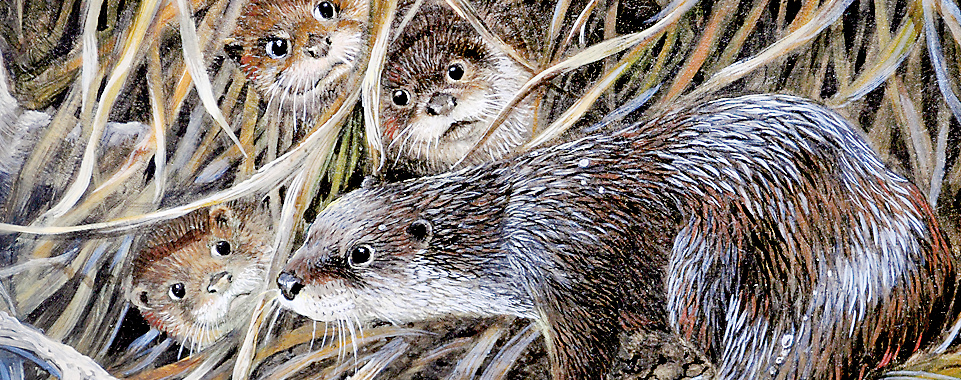Mammoth book on our mammals
A little known fact is that Sri Lanka is home to 125 Mammalian species. Much has been written about elephants, leopards and even on primates individually, but after W.W.A. Philips’ review of Sri Lanka’s mammals in the 1930s, there was no comprehensive review undertaken. Filling this void, is the new book “Mammals of Sri Lanka” launched on Friday.

The Otter: One of Gamini Ratnavira’s exquisite illustrations
With all of 1012 pages, the book authored by Asoka Yapa, with illustrations by the world renowned Sri Lankan wildlife artist – Gamini Ratnavira is a mammoth effort. The book also contains many photos of mammals taken in the field by veteran photographers such as Vimukti Weeratunga, Nadika Hapuarachchie and Dr. Janaka Gallangoda. Experts in the field too have contributed photographs of lesser known mammals and the book also contains a few ‘first time’ photos of some of the rarest mammals.
Yapa and Ratnavira’s book has several unique features. For the first time it carries colour illustrations of almost all of Sri Lanka’s mammal species. Indeed, there are illustrations even of new species that are proposed as endemic additions to the island’s fauna. A possible new loris, a new chevrotain, and a new beaked whale are among the animals pictured. For the first time there are distribution maps for the land mammals. Illustrations of scat and spoor are provided for many species after all, those are often the only signs left by a wild animal. Dive sequences are given for the larger whales to aid identification.
Asoka Yapa is a Zoologist by training and a communication specialist by profession. Talking to the Sunday Times, Mr. Yapa revealed that the text of the book was the painstaking effort of 30 months. There were lots of scientific publications to review and on some days he worked continuously until 4 a.m. and started work after just a few hours’ sleep. The list of bibliographic reference of over 500 testifies to the painstaking effort the author had to take to get the scattered scientific information on Mammals of Sri Lanka to one publication. “I wanted to keep the language simple and make the publication inspire new research interest on mammals of Sri Lanka,” said Asoka.
Each taxonomic order of mammals in Sri Lanka is introduced in their evolutionary, taxonomic, and ecological contexts. Family descriptions follow, after which are species by species accounts that cover morphology, behaviour, ecology, diet, reproduction, distribution within Sri Lanka, and conservation status and concerns. Where there are significant differences among subspecies within the island, these are described and illustrated.
The book is in full colour and is printed and bound in Sri Lanka with ecologically produced papers and ink. Published by the Field Ornithology Group (FOGSL) of the Department of Zoology, University of Colombo, it was launched on December 6 at the Sri Lanka Foundation Institute, Colombo 7.
The book is priced at Rs. 7500 . ‘The Mammals of Sri Lanka’ will be available at leading bookstores around the island. Further information can be obtained by contacting Anoma Perera or Indrika KaggodaAarachchi of FOGSL on 011 2501332 or 011 2592609.



